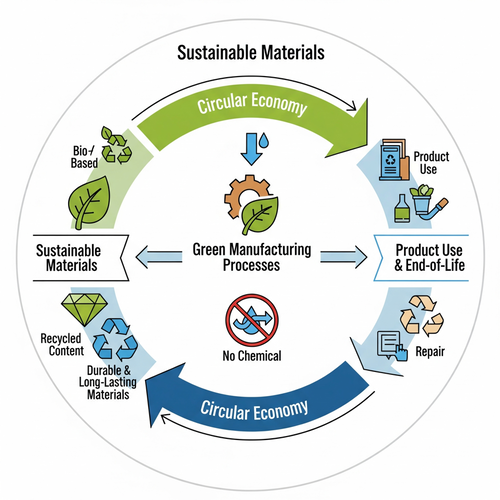Sustainable Materials and Green Manufacturing

Sustainability is now a core expectation in industry. Rising material demand, energy use, and climate risk make it urgent to rethink how products are designed and made. Green manufacturing keeps value creation high while cutting waste, emissions, and toxicity. It is not a niche trend. It is the operating system of modern industry, and it is shaping research and teaching at institutions such as Presidency University, especially within the Department of Mechanical Engineering.
What are sustainable materials?
Sustainable materials lower environmental impact across their life cycle. Examples include biodegradable polymers for packaging, recycled composites that upcycle post-consumer waste, bamboo and hemp-based fibers for lightweight panels, and advanced eco-alloys that deliver strength with fewer critical elements. These choices reduce landfill burden, shrink process emissions, and make end-of-life recovery practical. Selecting such materials early in design can cut a product’s carbon footprint more than downstream efficiency tweaks.
What is green manufacturing?
Green manufacturing aligns production with resource efficiency and circularity. Plants pursue energy efficiency through motor upgrades, heat recovery, and real-time monitoring. Lean methods target minimal scrap and rework. Circular economy approaches close loops with remanufacturing and take-back programs. Many lines now integrate renewable energy and energy storage to stabilize loads. Additive manufacturing reduces buy-to-fly ratios, while water-recycling systems and safer chemistries improve worker and community health. From 3D printing spare parts to on-site solar for process heat, real applications are growing quickly.
How academia accelerates progress
Universities translate these ideas into practice through research, talent development, and industry partnerships. At the Presidency School of Engineering and its Department of Mechanical Engineering advance this agenda with realistic initiatives: student capstones on life-cycle assessment embedded in design courses, and lab projects on energy audits and waste-heat recovery. Faculty-industry collaborations explore recycled-powder feedstocks for metal additive manufacturing and pilot workflows for closed-loop machining fluids.
What’s next
The future is intelligent and circular. Expect AI-driven material design that searches vast composition spaces for low-impact performance, 3D printing with recycled or bio-based filaments, and smart factories that optimize energy use minute by minute. Digital twins will couple quality, cost, and carbon in a single dashboard, guiding decisions in real time.
Written by,
Dr. Vivek Kumar Pandey
Assistant Professor, Dept of Mechanical Engineering













 Rajanukunte, Yelahanka, Bengaluru, Karnataka, Pin: 560119, India
Rajanukunte, Yelahanka, Bengaluru, Karnataka, Pin: 560119, India
 +91 9022092222
+91 9022092222